Tagged: Fall 2011
What’s Hot, What’s Not
| The Colbert Report | Network Evening News |
| Parks and Recreation | The Office |
| Locavores | Carnivores |
| Food Trucks | Fast Food Joints |
| iPads | Blackberries |
| Ironic Moustaches | Serious Moustaches |
| Getting Fro-Yo | Getting Ice Cream |
| Hulu | Good Ol’ Fashioned TV |
| Commuting by Bike | Commuting by Car |
| Groupon | The Yellow Pages |
| 5-Hour Energy© | Red Bull |
| Anderson Cooper | Oprah |
| Google+ | |
| The X Factor | American Idol |
Compiled by Dan Essrow (CAS’10, COM’10)
BU Students Dance (and Dance and Dance) for a Cause
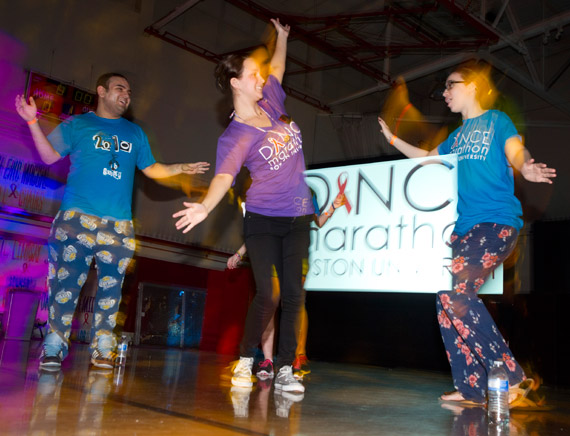
Left to Right: Elias Fraija (SAR’14), Michelle Markle (SAR’12) (purple top), Emily Holden (SAR’14) (in back), and Kathryn O'Neill (CAS’14) (glasses). Photo by Vernon Doucette
By Corinne Steinbrenner
“When there’s a cure, we’ll dance for joy. Until then, we’ll dance for life.” That’s the fitting slogan for Boston University’s largest student fundraiser, BU Dance Marathon. Although the marathon itself is months away, event co-chairs Eric Si (COM’12) and Laura Leahy (SED’12) are already hard at work, hoping to make Dance Marathon 2012 the largest and most successful BU dance party yet.
The students aim to top last year’s fundraising total of $25,493, adding to the more than $300,000 BU students have raised to support pediatric AIDS organizations since Dance Marathon began in 2003. The funds they collect will be donated, as they are each year, to the Elizabeth Glaser Pediatric AIDS Foundation and to One Heartland, a nonprofit group that sponsors summer camps for children living with or affected by HIV/AIDS.
Dance Marathon annually draws more than 150 dancers (no experience required), each of whom raises at least $100 in sponsorship from friends and family. The dancers stay on their feet for the entire 18-hour overnight marathon, cheered on by “moralers” who raise at least $75 each and work in shifts to keep the dancers’ spirits high. “Staying on your feet is symbolic of the struggle these kids go through every day,” says Si.
While Dance Marathon is held in the spring, committee members work year-round to plan, train volunteers, secure sponsors, schedule entertainment, and promote the event. They also participate in AIDS-awareness activities, such as the free HIV tests they offered on campus last year. “The purpose of Dance Marathon is not only to raise funds to help both our foundations,” says Si, “but also to create awareness and educate our community about AIDS.”
How can BU parents support Dance Marathon? First, says Si, they can encourage their sons and daughters to participate. “We don’t serve alcohol, so it’s a fun, safe night,” he says. Parents can also sponsor individual dancers [or] encourage their employers to donate food or prizes for the event.
Even small donations make a big difference in the fight against pediatric AIDS, Si says. While pediatric HIV and AIDS are fairly well controlled in the United States, thousands of infants in less-developed countries are infected every day. According to Si’s colleagues at the Glaser Foundation, many of those infections could be avoided with just $15 worth of drugs and services for pregnant women. “It’s something that’s so tangible,” he says. “It’s something that can be done.” ■
Watch a time-lapsed video condensing all 18 hours of Dance Marathon 2011 into about two minutes.
Video by Jon Shedler
Did You Know?
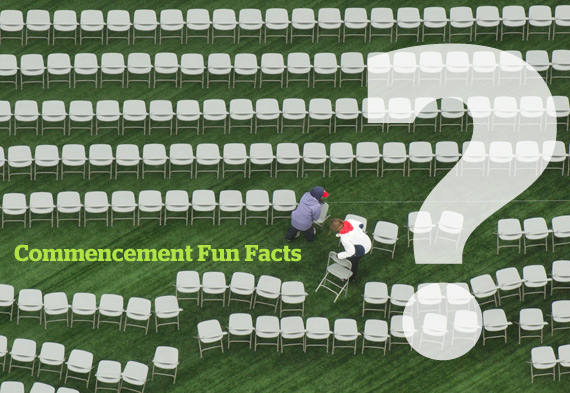
Photo by Vernon Doucette
Touching up signs and staging at Boston University’s Commencement takes 40 gallons of red paint. Plus, behind the scenes, 6,000 feet of duct tape are used, 10,000 hats are handed out to guests as sunshades, and 11,496 French pastries are served. Finally, as part of the University’s effort to reduce, reuse, and recycle, more than 108,000 half-liter plastic bottles are recycled to make 4,300 caps and gowns. ■
Watch a time-lapsed video of Commencement set-up
For more coverage of the 2011 Commencement, visit BU Today.
Video edited by Robin Berghaus
Celebrating Tradition
Photos from the 2011 Commencement Weekend reception for dedicated BU parents.
Photos by BU Photography

Jeanne Knox, Chairwoman of the Parents Leadership Council, welcomes families to the Celebrating Tradition Event on Saturday, May 21, 2011.

President Robert A. Brown and Dr. Beverly A. Brown welcome Marian Yeung, mother of Carmen Yeung (SHA’11), from Hong Kong.
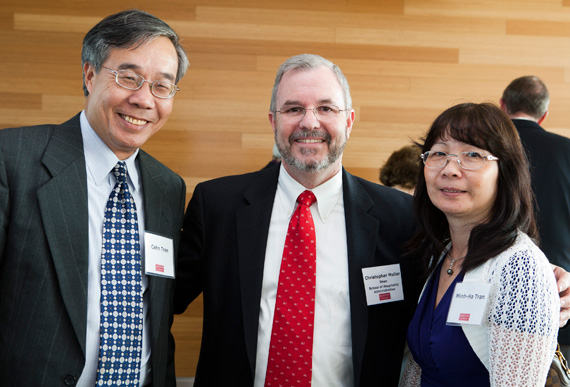
Canh Tran and Minh-Ha Dang, parents of Minh-Tam Thi Tran (SHA’11), celebrate their daughter’s graduation with Dean Christopher Muller from the School of Hospitality Administration.
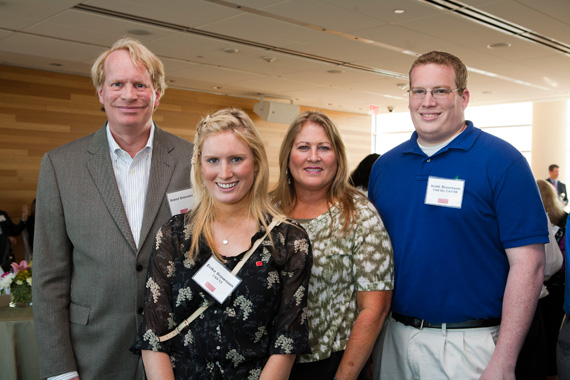
From left, Robert Brownson, Ericka Brownson (CAS’11), Maureen Brownson, and Scott Brownson (CGS’06, COM’08).
California Events
Photos from receptions hosted by parent volunteers in the Golden State.
Photos courtesy of Daryl DeLuca

Dean Kenn Elmore is joined by host committee members, Sami and Ilham Hamamji, parents of Peter (CAS’14), at an event in Laguna Beach, California.
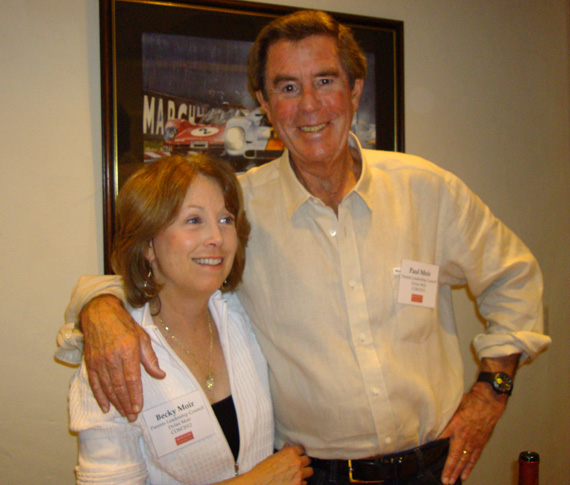
Parents Leadership Council members, Paul and Becky Moir, parents of Dylan (COM’12), hosted a reception for parents in the Los Angeles area.

Michael and Tracy Donefield, parents of Brent (SMG’14), were also host committee members at the event in Laguna Beach, California.
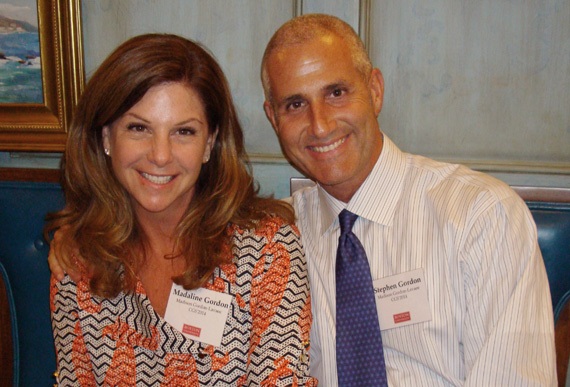
Madaline and Stephen Gordon, parents of Madison (CGS’12, COM’14), co-hosted the event in Laguna Beach, California.
Fenway for Free

By Corinne Steinbrenner
Attending a Red Sox game at historic Fenway Park is a rite of passage for BU students, and many Terriers have discovered a way to enter the beloved ballpark without paying for a ticket. No, they’re not sneaking under the fence on Van Ness Street; they’re volunteering as members of the Red Sox Green Team.
Since the Red Sox launched a sustainability program in 2008, thousands of students from BU and other area universities have signed up to attend individual games as part of these 30- to 50-member teams.
Psychology major Erica Casacci (CAS’12), of Plantation, Florida, volunteered for a day on the Green Team during summer 2010 along with two of her Terrier softball teammates. “We thought it would be a fun way to enjoy watching the game live and interacting with people at the park,” she says. Casacci and her Green Team compatriots were able to watch most of the Red Sox game that day, collecting recyclables primarily during breaks between innings when they were less likely to disrupt paying fans’ enjoyment of the game. “At first we were kind of nervous to go up to people and ask for their recyclables,” she says, “but we warmed up, and it ended up being a lot of fun.”
Casacci had attended games at Fenway before, she says, but “this was a different experience. You usually just go in and sit in your seat, but we got to experience the game in all different areas of the park and from all different angles.” And they got to help the Red Sox make their famously green park even greener.
In years past, the Dean of Students Office has coordinated the student volunteers for the Red Sox, but Sox staff took over that task this summer. Students wishing to volunteer for future games should send their name, email address, phone number, and the games for which they would like to volunteer to greenteam@redsox.com three days prior to game day. ■
The Road to a Career

Photo by Kalman Zabarsky
BU’s Center for Career Development helps students through every step of their job search, from selecting a major to polishing a résumé.
Watch Dan Essrow (CAS’10, COM'10), the winner of BU Today’s job search makeover contest, as he gets job interview tips and a free suit.
Video by Nicolae Ciorogan
The Most Generous Class Ever
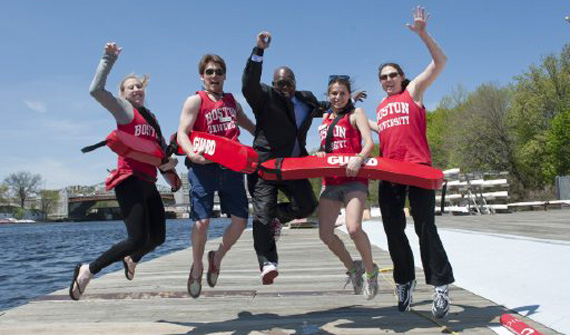
Photo by Kalman Zabarsky
Last spring, more than 2,011 members of Boston University’s Class of 2011 donated to the Class Gift fund, raising $35,000 for clubs, scholarships, athletic teams, and BU’s schools and colleges. By meeting their goal, the seniors prompted an additional gift of $100,000 from the BU Alumni Council. Can the Class of 2012 top that record-breaking goal?
Dean of Students Kenn Elmore had promised to jump into the Charles River wearing a tuxedo if the Class of 2011 reached their fundraising goal. Watch him make good on his promise.
Video by Nicolae Ciorogan
To Serve and to Parent: Karma Roberts
Karma Roberts has been a member of the BU family since her son, Mark (CGS’06, CAS’08), started his freshman year at Boston University in 2004. She became involved with the Parents Leadership Council (PLC) because she wanted to stay connected and to understand the inner workings of her son’s school. She admits that she was a bit of a “helicopter parent,” but after all, she was sending her son across the country (Karma and her family live in the Bay Area).
The Robertses quickly became ensconced in the BU community, particularly taking to the College of General Studies, where Mark's sister, Hilary (CGS'10, COM'12), also enrolled, following in her brother's footsteps. They made a donation to create the Roberts Family Conference Room in the Brendan F. Gilbane Study Lounge at CGS. And Mark and Hilary followed their mother's example by joining her in contributing to the CGS lobby restoration project. “It is important to teach your children to be philanthropic,” says Karma.
Karma remains loyal to BU. She is still an active PLC member—every summer she flies to Boston to represent the Parents Program at an orientation session; every fall she attends the Parents Leadership Council meeting; and she has hosted several events at her home for CGS and Dean Linda Wells. Karma is a dear friend and a loyal supporter of this institution, and her children will certainly leave their own BU legacies.
–Christy Olson Loring, Associate Director, Parents Program
Photo by BU Photography
A Letter from the Chairwoman of the Parents Leadership Council
Dear Fellow Parents,
Welcome to the first edition of the Boston University Parent online! We decided to create an electronic version of our magazine to be environmentally friendly, of course, but also to increase our interaction with the BU parent community in a more timely fashion. So as you settle in to read this publication, I encourage you to share your thoughts and opinions with us, ask questions, and post comments —the Parents Program wants to hear from you! We will be updating the magazine more frequently in an effort to further your involvement in the BU experience. You’ll also receive our monthly e-newsletter, Parent Extra, as well as copies of the University’s award-winning alumni magazine, Bostonia. I hope you will enjoy these enhancements. We’ll begin our journey with a look at BU’s Educational Resource Center . . . a perfect way to start!
Best wishes,
Jeanne Knox
Chairwoman, Parents Leadership Council
Mother of Merrill (COM’06) and Bobby (CGS’08, SAR’10, SPH’12)
2011–2012 Parents Leadership Council
| Kim Buttolph New Canaan, CT Kristen (CGS'10, BU'12) Marie Pinak Carr Neal (CGS'80, CAS'82) & Diana Cohen (CAS'81, COM'82) Haim & Barbara Dabah Jacqueline Dedell Susan Domolky Shimon & Lisa Feldman MJ Gaumond Lisa Gilligan William & Debralee (CGS'76, CAS'78) Goldberg |
Prem & Mamta Gupta New Delhi, India Ishaan (SMG'10) Samvid (SMG'14) Jamie Harris Lisa Stewart Jacobs (CAS'77) Sunil & Sunita Kanoria Jeanne Knox Steve & Julie Lifton Marten & Annika Mickos Paul & Becky Moir Gurramkonda N. & G.V. Naidu |
Karma Roberts Oakland, CA Mark (CGS'06, CAS'08) Hilary (CGS'10, COM'12) Jay & Liz Roewe Betsey Ruprecht Mark B. Smith Christina Strassfield Elaine Szujewski Maria Vecchiotti William & Olivia Weeks Wayne (CAS'79) and Deborah Zuckerman |
The Thurman Center: Evolving with Students
By Rich Barlow
Photo by Vernon Doucette
The Howard Thurman Center hosts a tea party once a week. No, not the kind that draws Sarah Palin devotees; this one is designed for fans of Egyptian chamomile and halawa confections of sesame and sugar. For the less adventuresome, bags of Lipton and Tetley are provided in wood-and-glass cases on the crimson-clothed table. Tea-lovers linger to chat at the table or lounge in the comfortable chairs and sofas in the center’s George Sherman Union basement lounge.
Sipping tea like a country squire isn’t the first thing that springs to mind when you think about a place dedicated to cultural programs. Yet the Tea Club lures a cross section of students. Attendees have included Tino Henrik Bratbo (CAS’13), a white New Jerseyan by way of Denmark; African American Kimberly Morton (CAS’11); and Annie Rupani (CGS’09, CAS’11), an olive-skinned Texan of Pakistani ancestry. In the words of Thurman Center Assistant Director Raul Fernandez (COM’00), the year-old club draws a group that’s “diverse without even trying.”
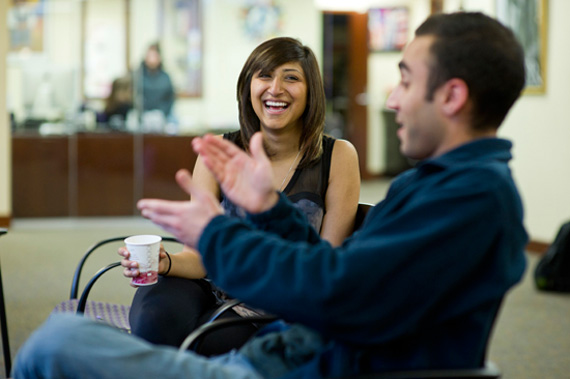
Annie Rupani (CAS’11), recent president of the Thurman Center Tea Club, and Michael Yahudaii (SMG’12) at the club’s weekly gathering. Photo by Cydney Scott
This year marks the 25th anniversary of the center, founded to offer cultural programs that carry on the multicultural, barriers-busting philosophy of the late Marsh Chapel Dean Howard Thurman (Hon.’67). Observing the milestone, the Thurman Center is evolving a new strategy to fulfill that mission. It is morphing beyond what Fernandez says was a place where only students of color came. “From our perspective, we were always for the entire campus,” he says. “But we weren’t reaching the whole campus. We wanted to be something broader.”
 Director Katherine Kennedy agrees: “Our programs have always been inclusive.” The center fashioned new events to make itself a hub where students of all races and ethnicities engage in shared passions that aren’t particular to any one group. That might be tea. Or it might be the center’s Book Club or its Culture Shock blog for aspiring writers, both launched within the past few years. Walk in on these activities, Fernandez says, and you see “a little bit of a Times Square. The most diverse events that we’ve had here have been events that had nothing to do with what you look like. Book Club—all you’ve got to do is be able to read. Tea Club—obviously, you like tea. If you don’t like tea, you can still show up. I’ll serve some coffee.”
Director Katherine Kennedy agrees: “Our programs have always been inclusive.” The center fashioned new events to make itself a hub where students of all races and ethnicities engage in shared passions that aren’t particular to any one group. That might be tea. Or it might be the center’s Book Club or its Culture Shock blog for aspiring writers, both launched within the past few years. Walk in on these activities, Fernandez says, and you see “a little bit of a Times Square. The most diverse events that we’ve had here have been events that had nothing to do with what you look like. Book Club—all you’ve got to do is be able to read. Tea Club—obviously, you like tea. If you don’t like tea, you can still show up. I’ll serve some coffee.”
More events have meant more attendance, which increased from about 6,000 visits in 2007 to more than 21,000 last year.
Fernandez argues that the emphasis on cross-cultural activities keeps faith with the philosophy of the center’s namesake. In 1944, Thurman cofounded the Church for the Fellowship of All Peoples in San Francisco, America’s first integrated, nondenominational congregation, drawn together by a common spirituality that knew no racial or creedal distinctions. “His intent was to connect people,” says Fernandez. “He said there was something called common ground, and if people can find that, whatever it is—some people find common ground around bad movies, or anime—then they can understand one another better.”
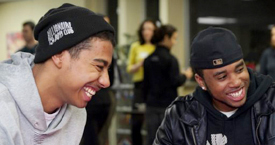
Photo by Vernon Doucette
Thurman unwittingly forecast the attitudes of many 21st-century BU students, who either don’t identify themselves primarily by race or ethnicity or else are more interested in comparing notes with peers of different backgrounds. “I personally don’t identify myself by my culture,” says Jennifer Gilbert (CAS’13), who is Jewish. She attends synagogue, but does so to sing and to please her family rather than out of conviction. “I identify myself more by my experiences. You don’t choose your culture. Your experiences are something you shape about yourself.”
“My identity’s still a work in progress,” says Bratbo. “I don’t really identify by my culture or demographics. If anything, I identify with the Howard Thurman Center,” as a student ambassador, or volunteer.
 Both Bratbo and Gilbert are part of the nation’s white racial majority, and race can be more crucial to minorities. But Morton and Alexandria “Sandy” Ocasio-Cortez (CAS’11), for whom ancestry is a point of pride and essential to their sense of self, also value the chance to mingle with others from different backgrounds.
Both Bratbo and Gilbert are part of the nation’s white racial majority, and race can be more crucial to minorities. But Morton and Alexandria “Sandy” Ocasio-Cortez (CAS’11), for whom ancestry is a point of pride and essential to their sense of self, also value the chance to mingle with others from different backgrounds.
“I am black Baptist. That’s not something I’ve lost at the Thurman Center,” says Morton. “Raul’s correct; this center used to be very visited by students of color, and it still is. You find that common ground—which for all of us is tea—and we might have a conversation and I’ll say, ‘Oh, Tino, you’re from Denmark, that’s interesting,’ and talk about Danish culture. It’s still a cultural center, but it’s definitely more than that.”
Ocasio-Cortez, also an ambassador, stresses her Hispanic identity and Puerto Rican family. But Thurman’s writings urge readers “to act in accordance with your passion,” she says. “Some people are passionate about their cultural heritage, but some are passionate about other things that happen to have a cultural breadth—tea being one of them.”
“One of the things that allows people to expand who they are is to identify with other people’s passions. I identify with my cultural community, but I’ve learned a lot from Tino’s passion for literature.” (Did we mention the Thurman Center has a Book Club?)
You’ll still see racially or ethnically focused groups meeting at the center, from Alianza Latina to the Russian American Cultural Club. Cultural identity is especially important to students of color, says Kennedy—hence the center’s affiliated cultural groups. But “we work to make sure that is not all they focus on, by encouraging them to find that comfort zone” through other center activities.
Besides, says Fernandez, there’s only so much the Thurman Center can do to help cultural groups express themselves: “I can’t tell somebody what it means to be Russian.” ■
This story was adapted with permission from BU Today.








